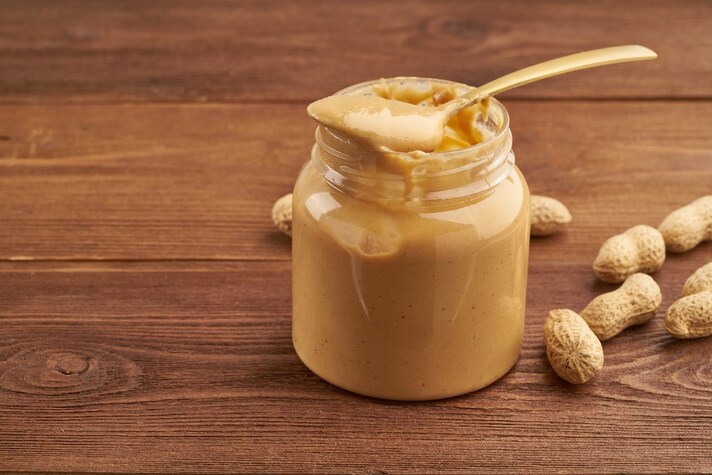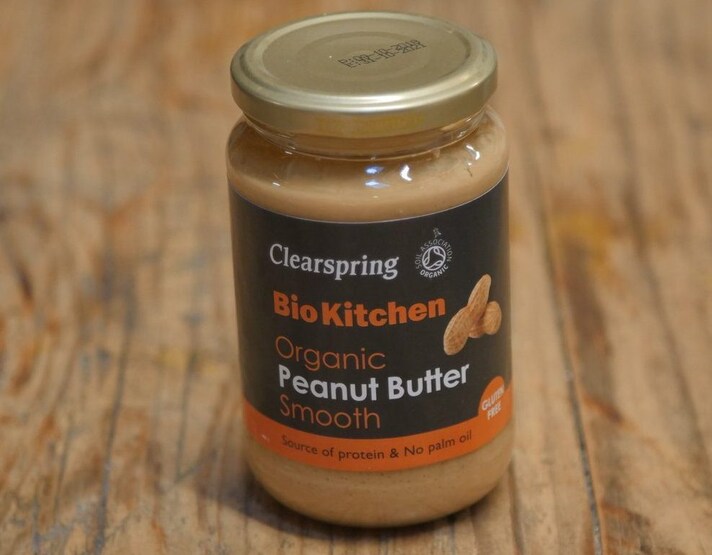What is Peanut Butter? Everything You Didn’t Know About the US Cream Born Thanks to a Killer Beetle
A true American-born delicacy, today it is widespread and beloved throughout the world: the delicious peanut butter, is a real delight. But did you know that it owes its birth to a beetle that destroyed the cotton plantations?
;Resize,width=742;)
Today there is no one who does not know peanut butter: the delicious cream made from toasted peanuts, cane sugar or honey and peanut oil has long been identified only with American tradition – it is a product of American origin, in fact – but has now spread globally, so much so that it is loved and appreciated well beyond the borders of the USA.
The credit goes to the goodness of this spreadable cream, defined as “butter” even though it does not contain any trace of it and instead prepared with 3 simple, easily available ingredients, which mean that this product can be easily made at home and used in a variety of ways: you can use it to prepare the traditional American breakfast/snack by spreading it on toasted bread together with jelly, or you can use it as a garnish for pancakes, ice cream, yogurt cups and spoon desserts, or you can add it directly to the dough of biscuits and cakes.
In short, peanut butter is a real specialty rooted in American tradition and it seems incredible that it has become so beloved if you think that it was born after a beetle infestation that devastated the cotton fields, forcing the landowners to grow peanuts even though they were considered more like animal feed. Curious to know the whole story? We'll tell you.
The Origins of Peanut Butter
The very first traces of a preparation similar to peanut butter can be found thousands of years ago: in fact, it seems, from some evidence found, that the Aztecs were the first to produce a paste extracted from peanuts. To discover the modern version of this preparation, however, we must make a big leap forward in time, precisely to the end of 1800: it is in this era that several characters are linked to the origin of peanut butter.
Let's make a necessary premise: until the American Civil War (1861-65), peanuts were seen more as a food intended for animals and the poor, especially in the South of the country, but then it was the soldiers during the war who began to consume them as an important source of protein. This occurred in parallel with the event that, more than anything else, influenced the spread of peanuts as a food for humans: the appearance of a beetle that devastated cotton plantations at the end of the nineteenth century.

Having these immense fields now completely free from crops and, given the increase in demand for peanuts, the landowners converted this space to the cultivation of peanuts, laying the foundations for the large-scale commercialization of derivative products that would arrive a few years later. George Washington Carver, an African-American born into slavery shortly before the Civil War and who became a renowned agronomist, was fundamental in this sense: it was he who encouraged numerous landowners to convert their cotton crops by focusing on peanuts.
Driven by the growing popularity of peanut crops and peanuts used as a snack, sold hot and roasted on the streets first to the audiences of the Barnum Circus, then to those at baseball games, a second character enters the scene: the Canadian pharmacist Marcellus Gilmore Edson, who patented a process for grinding roasted peanuts with the addition of sugar to obtain a cheap spread that could replace meat for less well-off families.
At the same time, in 1895, a prominent figure in the US of the time also experimented with peanuts. Dr. John Harvey Kellogg (yes, the creator of Kellogg's cereals) in his search for the perfect diet that would keep his patients free from sexual urges that polluted the spirit of man, created a cream obtained from raw peanuts; in this case, however, it was a different product from today's peanut butter because Dr. Kellogg also considered sugars to be an "impure" food.
The Popularity of Peanut Butter
How did an experimental product like peanut butter become so important, loved and widespread? It all goes to a businessman from St. Louis, Missouri: his name is George Bayle and he was the first to understand the potential of the peanut-based spread, so much so that in 1894 he began to propose it as a snack and to present it and in 1904 he presented it at the city's World's Fair.
At the same time, in 1904, Ambrose Straub, also from St. Louis, had patented a machine for making peanut butter, thus facilitating the process of industrialization: soon after, the Beech-Nut and Heinz companies marketed it throughout the country and in 1907, 15.4 tons of peanut butter were produced. Thanks to this success, peanut butter became a product no longer intended only for the wealthy classes but accessible to everyone, but it could not yet be marketed on a large scale because it remained difficult to store and therefore transport.

The turning point came in the 1920s, when the hydrogenation process was invented, a reaction that allowed, among other things, to convert vegetable oils into solid or semi-solid fats (such as margarine), that is, less expensive fats, which rancid less than animal fats, such as butter, and allow for longer conservation. Thus the product could be transported without deteriorating and the peanut butter industry was born.
Peanut Butter, a True American Icon
Over the course of the 20th century, peanut butter's growth was exponential, slowly conquering the entire world and becoming deeply rooted in American culture, so much so that today it is still a staple food in American schools thanks to school feeding programs, helping to increase the love for peanut butter among young people.
It is such an iconic product that it has often been associated with equally iconic characters in American culture: for example, Elvis Presley‘s predilection for "peanut butter" is very famous, in particular spread in a sandwich filled with grape jam, sliced banana and fried bacon strips. Legend has it that it was not a normal sandwich, but rather an entire loaf of bread filled with a healthy jar of peanut butter, a jar of jam and a kilo of bacon. The contribution of this quick snack? Just 8000 calories.

Other well-known figures associated with peanut butter include American astronaut Alan Shepard, who in 1961 took a peanut butter and jelly sandwich into space during the Freedom 7 mission, and former US President Jimmy Carter, who declared during his 1976 presidential campaign that the spread was one of his favorite snacks and in fact, both before and after his presidency, he was one of the peanut farmers destined to be transformed into peanut butter.
;Resize,width=767;)
;Resize,width=712;)
;Resize,width=712;)
;Resize,width=712;)
